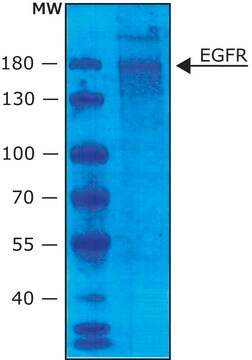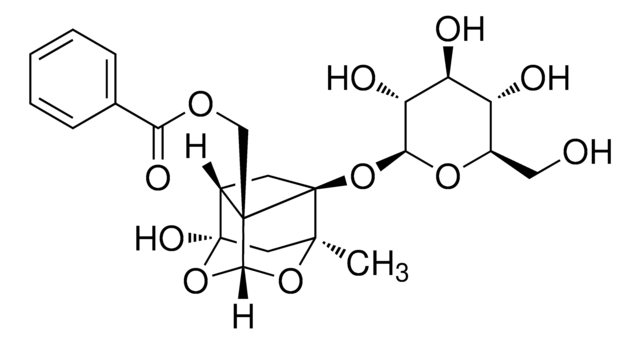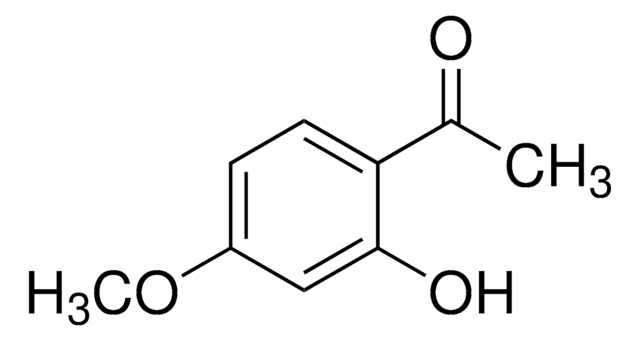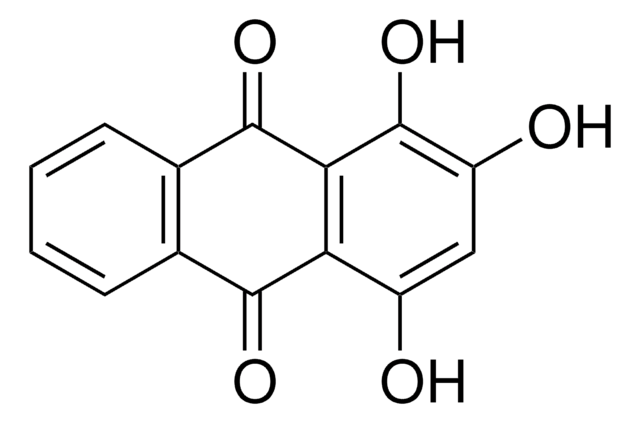SRP3108
Maspin human
recombinant, expressed in E. coli, ≥98% (SDS-PAGE), ≥98% (HPLC), suitable for cell culture
Synonym(s):
Protease inhibitor 5, SerpinB5
Sign Into View Organizational & Contract Pricing
All Photos(1)
About This Item
UNSPSC Code:
12352200
NACRES:
NA.32
Recommended Products
biological source
human
recombinant
expressed in E. coli
assay
≥98% (HPLC)
≥98% (SDS-PAGE)
form
lyophilized
mol wt
42.2 kDa
packaging
pkg of 20 μg
technique(s)
cell culture | mammalian: suitable
impurities
<0.1 EU/μg endotoxin, tested
color
white to off-white
UniProt accession no.
shipped in
wet ice
storage temp.
−20°C
Gene Information
human ... SERPINB5(5268)
General description
Maspin (mammary serine protease inhibitor), also known as SERPINB5 (serpin family B member 5), was first identified in 1994. It is an epithelial-specific protein that belongs to the serine protease inhibitor superfamily known as serpin. It shows major expression in human mammary epithelial cells.
Recombinant human Maspin is a 42.2kDa non-glycosylated protein containing 375 amino acid residues.
Recombinant human Maspin is a 42.2kDa non-glycosylated protein containing 375 amino acid residues.
Biochem/physiol Actions
Maspin (mammary serine protease inhibitor) functions as a tumor suppressor in various types of cancer, such as breast cancer, prostate cancer etc. Its expression in cancer is thought to be controlled by DNA methylation, and in breast cancer and glioma its expression is silenced by abnormal methylation. In tissues of pulmonary adenocarcinoma (AC) patients, the mRNA expression of maspin is significantly increased, and hence, maspin mRNA expression might have potential as a prognosis marker in AC. Study in two MIBC (muscle invasive bladder cancer) cell lines (T24 and 5637) shows that overexpression of maspin can increase cisplatin chemosensitivity. In MIBC patients receiving cisplatin based neoadjuvant chemotherapy, the expression of maspin correlates with the prognosis.
Recombinant human Maspin is a 42.2kDa non-glycosylated protein containing 375 amino acid residues.
Recombinant human Maspin is a 42.2kDa non-glycosylated protein containing 375 amino acid residues.
Sequence
MDALQLANSA FAVDLFKQLC EKEPLGNVLF SPICLSTSLS LAQVGAKGDT ANEIGQVLHF ENVKDIPFGF QTVTSDVNKL SSFYSLKLIK RLYVDKSLNL STEFISSTKR PYAKELETVD FKDKLEETKG QINNSIKDLT DGHFENILAD NSVNDQTKIL VVNAAYFVGK WMKKFPESET KECPFRLNKT DTKPVQMMNM EATFCMGNID SINCKIIELP FQNKHLSMFI LLPKDVEDES TGLEKIEKQL NSESLSQWTN PSTMANAKVK LSIPKFKVEK MIDPKACLEN LGLKHIFSED TSDFSGMSET KGVALSNVIH KVCLEITEDG GDSIEVPGAR ILQHKDELNA DHPFIYIIRH NKTRNIIFFG KFCSP
Physical form
Lyophilized from 10 mM Sodium Phosphate, pH 7.5.
Reconstitution
Centrifuge the vial prior to opening. Reconstitute in water to a concentration of 0.1-1.0 mg/ml. Do not vortex. This solution can be stored at 2-8°C for up to 1 week. For extended storage, it is recommended to further dilute in a buffer containing a carrier protein (example 0.1% BSA) and store in working aliquots at -20°C to -80°C.
Storage Class
11 - Combustible Solids
wgk_germany
WGK 3
flash_point_f
Not applicable
flash_point_c
Not applicable
Choose from one of the most recent versions:
Certificates of Analysis (COA)
Lot/Batch Number
Don't see the Right Version?
If you require a particular version, you can look up a specific certificate by the Lot or Batch number.
Already Own This Product?
Find documentation for the products that you have recently purchased in the Document Library.
Aberrant Maspin mRNA Expression is Associated with Clinical Outcome in Patients with Pulmonary Adenocarcinoma.
Lu M et al
Medical Science Monitor : International Medical Journal of Experimental and Clinical Research, 22, 134-139 (2016)
Maspin enhances cisplatin chemosensitivity in bladder cancer T24 and 5637 cells and correlates with prognosis of muscle-invasive bladder cancer patients receiving cisplatin based neoadjuvant chemotherapy.
Chen J et al
Journal of Experimental & Clinical Cancer Research, 35, 2-2 (2016)
Zhila Khalkhali-Ellis
Clinical cancer research : an official journal of the American Association for Cancer Research, 12(24), 7279-7283 (2006-12-26)
Maspin (mammary serine protease inhibitor) was identified in 1994 by subtractive hybridization analysis of normal mammary tissue and breast cancer cell lines. Subsequently, emerging evidence portrays maspin as a multifaceted protein, interacting with diverse group of intercellular and extracellular proteins
Methylation-induced silencing of maspin contributes to the proliferation of human glioma cells.
Xu L et al
Oncology Reports, 36(1), 57-64 (2016)
Chikako Takeda et al.
Diagnostic pathology, 9, 205-205 (2014-11-02)
Maspin is a 42 kDa protein known to act as a tumor suppressor. Although its function has not been fully elucidated, numerous reports have investigated the prognostic impact of maspin in patients with several types of cancer. However, there have
Our team of scientists has experience in all areas of research including Life Science, Material Science, Chemical Synthesis, Chromatography, Analytical and many others.
Contact Technical Service





